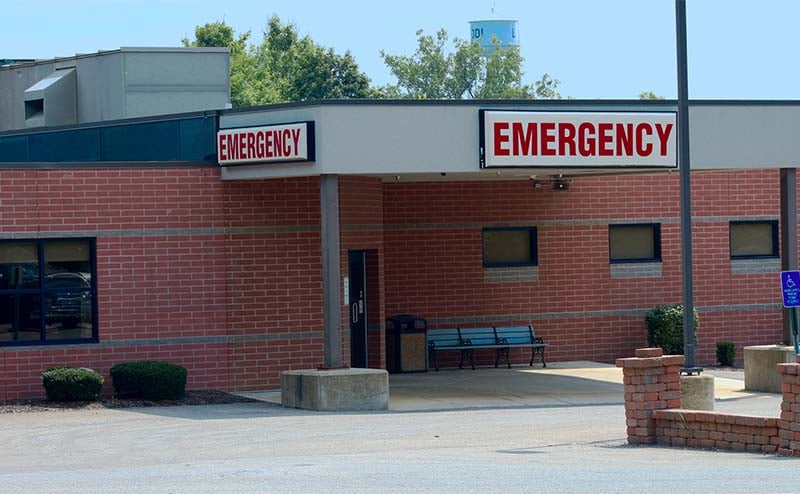Last Friday, ACEP formally responded to a major regulation issued by the Centers for Medicare & Medicaid Services (CMS) impacting Medicare outpatient hospital payments in 2022. As you may recall, the reg included a large request for information (RFI) on the implementation of a new provider designation under Medicare called “Rural Emergency Hospitals” (REHs).
As background, Congress included a provision in the Consolidated Appropriations Act (enacted last December) that would allow critical access hospitals and small rural hospitals (those with less to than 50 beds) to convert to REHs starting on January 1, 2023. REHs, once established, will not provide any inpatient services, but must be able to provide emergency services 24 hours a day/7 days a week. Further, they must meet other requirements, including, but not limited to: having a transfer agreement in place with a level I or level II trauma center; adhering to quality measurement reporting requirements that will be set by CMS; and following new emergency department (ED) conditions of participation. With respect to payment, REHs will receive a five percent bump up to the facility payments that hospitals traditionally receive for outpatient services under the Medicare OPPS. They will also receive an additional facility payment on top of that. It is important to note that although there will be higher facility payments for REHs, you as emergency physicians will not receive any higher payments under the Medicare physician fee schedule if you provide services in REHs.
To get REHs up and running by 2023, CMS must create all the requirements associated with the new facility-type through regulations. Thus, to help CMS begin its important work, the agency sought comments on a broad range of topics in the RFI: 1) Type and Scope of Services Offered by REHs; 2) Health and Safety Standards, Including Licensure and Conditions of Participation; 3) Health Equity; 4) Collaboration and Care Coordination; 5) Quality Measurement; 6) Payment Methodology; and 7) Enrollment Process.
In ACEP’s response to the RFI, we state that we have long advocated for the REH concept, as we believe that REHs have the potential of expanding access to emergency care in certain rural areas, especially those that have been impacted by recent hospital closures. We also repeatedly emphasize the need for all services delivered in REHs to be supervised by board-certified emergency physicians either in-person or virtually via telehealth—even though the Consolidated Appropriations Act allows any physician or certain non-physician practitioners (like nurse practitioners and physician assistants) to provide services in REHs. This is a patient safety issue, as there is currently no adequate required educational standard for non-emergency medicine trained physicians, nurse practitioners (NPs), and physician assistants (PAs) to practice in emergency departments (EDs). Emergency patients represent some of the most complex and critically ill patients in medicine and effective management of these patients requires years of specialized training—which only an emergency medicine residency training program provides. Further, PA and NP programs are extremely abbreviated compared to medical training that physicians receive. We therefore request that CMS establish a standard of training for all non-emergency medicine-trained physicians, PAs, and NPs as a REH condition of participation.
Another important issue ACEP weighs in on in our response is how REHs can address the significant health care disparities that currently exist in rural areas. Patients in rural areas are especially vulnerable to social risk factors that impact overall health, as they suffer from higher age adjusted mortality, greater rates of chronic disease, increased high risk behaviors, and decreased life expectancy when compared to urban patients. There are many interventions that are currently being employed in EDs to help identify barriers to health such as transportation and access to food and housing. One such tool that ACEP supports to help manage care for patients with complex needs is the Collective Medical Technologies’ (CMT) Edie™ (a.k.a. PreManage ED) software. Edie™ is an information exchange that provides critical information on patients, such as how many ED visits patients have had in the last year, where they presented, their drug history, other providers who are involved with the patients, and finally, whether there is a patient-specific care management plan that could guide treatment.
ACEP is continuing to explore other innovative ways emergency physicians can help coordinate care for high-risk patients, including through participation in alternative payment models (APMs). As you probably know, ACEP has developed an APM called the Acute Unscheduled Care Model (AUCM). The model focuses on safely discharging Medicare beneficiaries from the ED. Under the model, a Medicare beneficiary who presents to the ED will undergo a safe discharge assessment (SDA) concurrent to receiving clinical care to identify socio-economic factors and potential barriers to safe discharge back to the home or community, needs related to care coordination, and additional assistance that may be necessary. ACEP is excited about the infinite possibility this model has in terms of improving care for Medicare beneficiaries and is eager to work with CMS’ Innovation Center on implementation. We believe that this model translates extremely well to the rural setting where it is very important to engage in post-discharge planning and care-coordination to ensure that patients receive the follow-up treatment they need.
Further, to provide more equitable care to all in need, ACEP also states in our response that we should address the issue of implicit (unconscious) bias of physicians. Implicit bias may affect a physician’s clinical decision-making, which may have significant impacts on a patient’s outcome. ACEP offers a free online continuing medical education (CME) course to members, “Unconscious Bias in Clinical Practice,” to help emergency physicians learn about the negative effects of unconscious or implicit bias in clinical scenarios, as well as learn how to employ strategies to minimize these effects.
Moving on from the important issue of addressing health care disparities and promoting health equity, we also provide input on how CMS should measure quality of care in REHs. We believe that there is a need to improve the quality of care delivered in rural areas. Research suggests that patients being treated in rural EDs may overall have less acute conditions but experience worse outcomes when compared to patients receiving care in urban EDs. Therefore, it will be important that CMS establish a core set of measures that help REHs focus on improving patient outcomes. Further, CMS could consider measures that are valid and reliable even with lower volumes of patients as well as measures that address care transitions.
There should also be appropriate incentives for REHs to report quality data and improve their performance over time. However, quality improvement takes time, and as new facilities, REHs should not be held financially accountable for their quality performance initially. Further, the performance scores should be risk-adjusted based on the patient populations the REH care for, including the complexity of cases and the social risk factors present among their patients. In addition, if the REH is the only facility providing emergency care in a wide-spread geographic area, there could become issues with ED crowding or boarding—especially if the REH has insufficient staffing or bed capacity. These types of factors could impact patient satisfaction scores. If REH quality performance scores are publicly reported, CMS should find a way of flagging low performance scores on the Medicare “Compare” site that are due to factors beyond the control of REHs.
Finally, ACEP provides some feedback on questions related to REH payments. The additional Medicare payments to REHs granted by the Consolidated Appropriations Act will go to the facility itself and not the physicians who work there (physicians would be reimbursed at a traditional rate under the Medicare physician fee schedule.) Therefore, recruiting physicians to work at REHs could be a significant issue. We also state that even the added facility payments may not cover all the operational costs that REHs may incur in order to provide emergency care 24 hours a day/ 7 days a week.
All in all, we hope that CMS will incorporate our comments and suggestions into the REH conditions of participation and other policies that it establishes for this new facility type going forward. CMS did not actually propose any REH policies in this year’s regulation, which means that all the requirements should be fleshed out in next year’s regulation. Between now and then, we hope to meet with CMS to discuss our comments and why we believe that our recommendations are important for the agency to adopt to ensure that REHs provide high-quality and equitable emergency care to patients in rural areas.
Until next week, this is Jeffrey saying, enjoy reading regs with your eggs.






